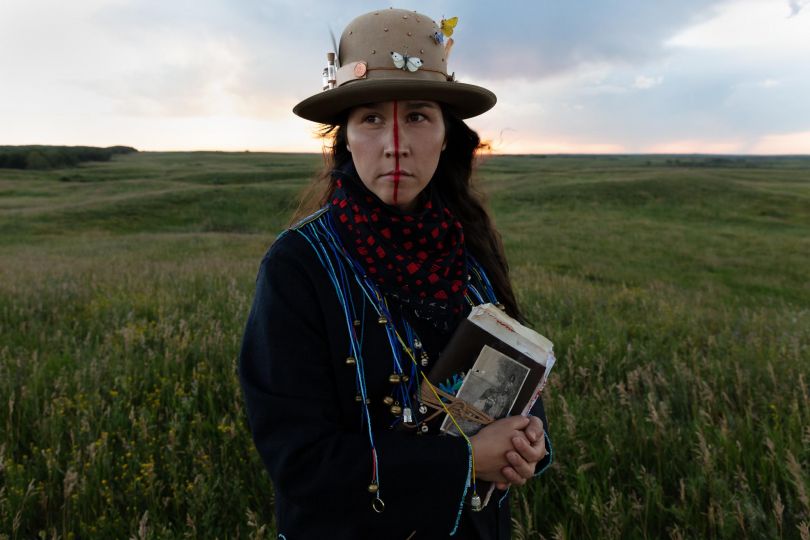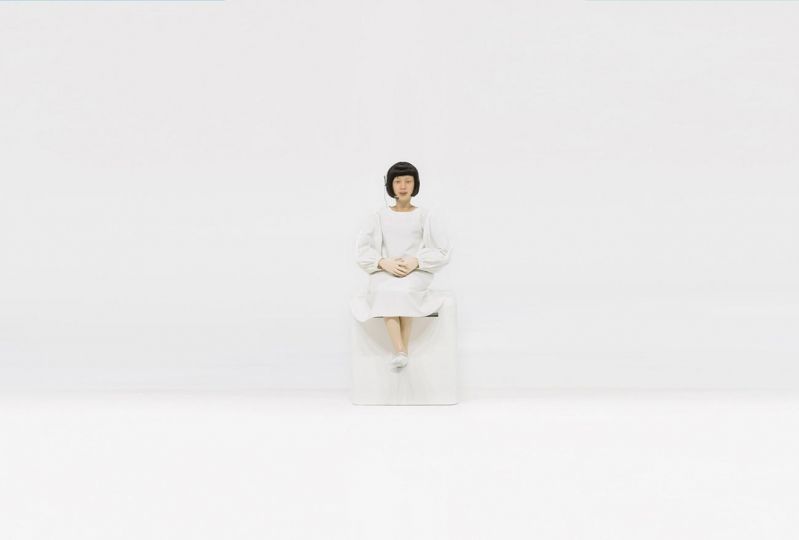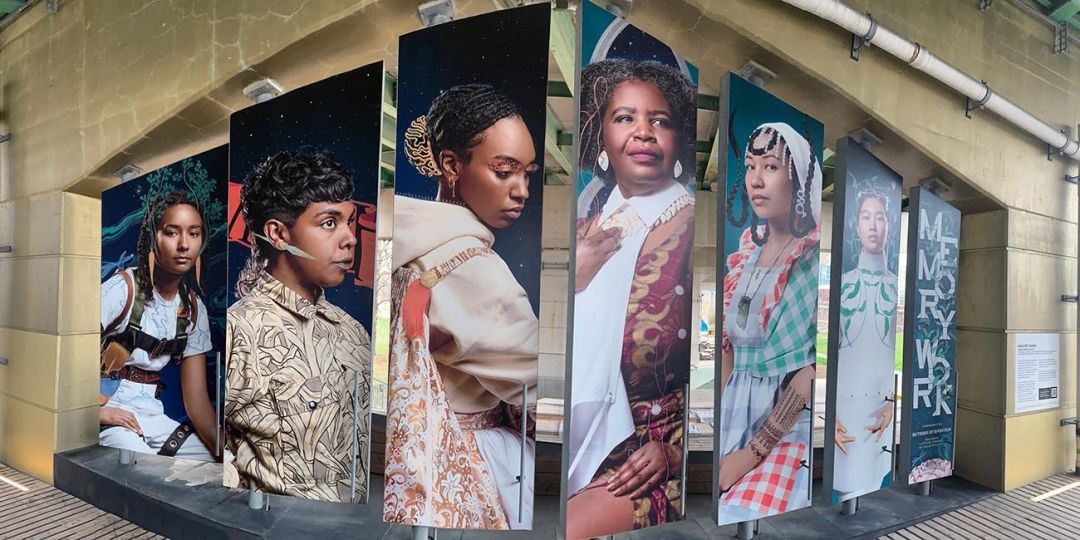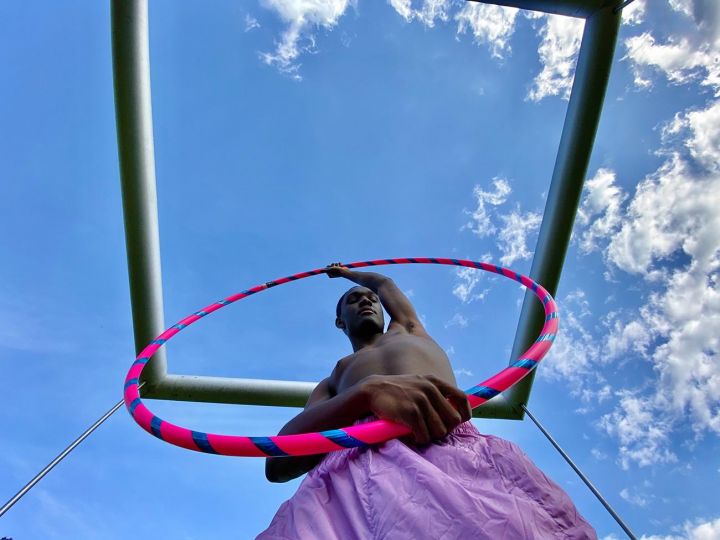As May is about to begin, all eyes will be on Toronto, which for a month will be the world’s photography rendez-vous. On the occasion of the Scotiabank CONTACT Photography Festival, we talked to its Chief Executive Officer, Darcy Killeen.
The 27th edition of the Scotiabank CONTACT Photography festival starts on April 28th and runs until May 31st. Through all these years, what are the most important evolutions of the festival?
Darcy: It’s our 27th edition and the festival continues to grow and be massive in size and scope, with over 180 exhibitions opening simultaneously in all the major museums, galleries, artist-run-centres, and various outdoor and public spaces. We are showing the work of over 450 artists and our continued focus is that we are here to support artists, to elevate their careers, to provide a platform for them and support them in as many ways as we can. Another continued focus is on foregrounding marginalized artists, and something that is very constant with CONTACT and makes us really unique compared to other festivals is that we really bring together the biggest names in photography, whether it be Wolfgang Tillmans or the Canadian artist Lynne Cohen, but also bring together many people who are having first-time exhibitions. So many graduating classes of photography students at the colleges and universities here in the Toronto area are showing; amateur, emerging, and established photographers are showing, and we bring them all together for this massive celebration of photography. With over 180 opening receptions, they can often meet their fellow artists and curators, and further, they also have many opportunities to partake in our array of free public programming and educational offerings, whether it’s an artist talk, a lecture, screening, workshop, or other unique program.
Your programs are diverse and as you said cover the whole city with hundreds of exhibitions in galleries, museums and public spaces, how do you select the artists and projects presented?
Darcy: CONTACT is very unique—that we have built this vast network of artists and curators is due to the fact that we are very much a grassroots organization, founded 27 years ago with the aim of really supporting photography democratically, partnering with a slew of incredible institutional and community partners to make the festival what it is. The festival is structured as such: The curated Core program of Exhibitions and Outdoor Installations features established North American and international artists, presented by museums, galleries, and artist-run-centres. The Open Call Exhibitions by emerging and established photo-based artists are gathered from a public call for submissions, and are presented in galleries, coffee shops, store windows, and alternative venues throughout the city.
CONTACT itself has a staff of 6, and we do have curatorial leaders in the organization. We produce selected exhibitions at CONTACT gallery annually, as well as the program of Core Outdoor Installations as part of the festival. This year we are presenting a commissioned solo exhibition and two outdoor installations by artist Maggie Groat, curated by Tara Smith, our executive director. CONTACT’s Core Outdoor projects are historically curated internally, but this year we have also invited a number of guest curators to program local and international artists engaging in critical dialogues, with this year’s festival featuring 21 unique installations across the city. Many of these are brought to us by different partners, like The Bentway or Critical Distance Centre for Curators, who are selecting and curating their artists. So that’s why we have this wide curatorial voice. In the Core Program there probably are 50 curators that we’re working with.
So they are all free to choose what they want to present?
Darcy: Yes absolutely. We historically had a theme with the aspiration that partners would curate towards that theme, but as the festival continued to grow, it became an impossibility. And with a staff of only 6 we really reinvent ourselves so quickly, so we don’t have the ability to tell our partners — institutions, galleries, and others — that these are our themes for the next five years. We rely on the relationships that we have with them and the knowledge that they are curating at the highest level. The fact that we have Wolfgang Tillmans, for example, as part of this year’s festival is due to our partnership with the Art Gallery of Ontario. That’s the way that works.
CONTACT is here to amplify what both emerging and established artists and curators are doing, to give them media attention and build an audience. Last year we had 650,000 visitors, so we drive our audience to go to see and experience these exhibitions. The Open Exhibitions are not juried, so if a photographer has been documenting X, Y, Z for 5 years and will be having an exhibition at a particular space, they are invited to submit it for free to be part of the festival. They are then included in the festival’s program, catalog, and website alongside a lineup of well-established artists, and we are really proud of that.
Environmental and ecological issues are a major component of your program this year, especially with the solo show of Maggie Groat, who questions the notions of sustainability and the recovery of materials through her photographic collages. Facing the climate emergency, is this a subject not to be missed?
Darcy: It’s a subject that we have been discussing for many years. It’s something that is very important to us, to many artists, so there are many exhibitions related to that. Even though we no longer have an annual theme, environmental concerns are a critical topic that artists are increasingly exploring, and thus remain central to our program, which hinges on contemporary photographic discourses. As you’ve mentioned, Maggie Groat’s thoughtful practice centers this ethic of reducing harmful impacts on the earth while generating new ways of seeing and incorporating photography. Further, we are doing internal research and planning on ways to decrease CONTACT’s environmental impact in producing our own exhibitions and outdoor installations.
One of your commitments is also to promote Indigenous voices and the necessary Indigenous-settler dialogue in Canada through photography. The exhibitions of Robert Kautuk, Jake Kimble or , the group exhibition Materialized at Critical Distance Centre for Curators could be examples of this. Could you tell us more about this commitment?
Darcy: It has always existed in the festival since the beginning. We recently hosted a two-part exhibition organized by the Inuit Art Foundation (IAF)—with work by over 40 Indigenous artists presented at CONTACT gallery and in a related outdoor installation on King Street West—in conjunction with the IAF’s annual conference and as part of Nuit Blanche Toronto. It was an amazing exhibition and celebration of Indigenous art.
Notable Indigenous artist Meryl McMaster has been featured in the festival a number of times over the last decade, and this year she has a major retrospective exhibition at the McMichael Canadian Art Collection. The first time I saw Meryl’s work was in a group exhibition of eight artists at the Museum of Contemporary Canadian Art (now MOCA Toronto), 12 to 15 years ago, and it’s been amazing to see her career grow since then. Throughout that time, we’ve been here to support her and try to help build an international platform for her work, since we have a significant audience coming from outside Canada to see the festival. Before Covid we tracked an audience of over 1.5 million, with nearly 400,000 tourists and tens of thousands coming from the U.S and Europe.
Could the festival ever settle in another city in North America? Or in Europe?
Darcy: It’s something that we have thought about, of creating different satellites, especially in Canada, maybe Vancouver or Montreal. The really concluding story is that we want to drive the world to come to Toronto. When we look at the most significant festivals around the world, whether it’s Arles or Madrid, or Paris Photo, or Houston, they are in the cultural calendar, people go to these festivals every year. We want that in Toronto. We want the world to come here and to help grow Toronto’s reputation as a cultural center.
That’s where we’re at, and now we’re thinking about internationalizing the festival more. Last year, for example, we partnered for the first time with the Photo 2022 festival in Melbourne, which will continue as a bi-annual exchange. For its public installation in Melbourne during Photo 2022, CONTACT opted to feature the work of Indigenous artist Dana Claxton, and in Toronto we featured the work of South Sudanese, Narrm/Melbourne-based artist Atong Atem as part of the CONTACT Festival. This year we’re doing the same thing with Capture Festival in Vancouver, which is celebrating its eleventh year. Vancouver is a very important city for photography in Canada. For this year’s exchange, we’re featuring work by Jake Kimble, a young Indigenous artist from Northern British Columbia, on a massive mural here in downtown Toronto. These are the aspirations that we have, to internationalize that way, not by creating satellite festivals, but by growing and strengthening our partnerships. In the future, I would love to do something with Arles, Paris Photo, or Madrid. This year we’re working with 85 partners and that’s what is driving this festival.
According to you, what are the new photography trends?
Darcy: This year we’re seeing so much more video and moving-image work, as well as alternative digital formats including gifs, holograms, web apps, and AI. These have already and are poised to drastically alter the landscape of contemporary photography in coming years. We’re also seeing so much more awareness and discussion on the environmental side, and as mentioned, one major thing we’re looking at is not just what the artists are doing but also what we are doing production-wise. We are creating over 20 massive outdoor installations, some of them as big as 140 x 45 feet, and so we are trying to figure out ways to create more ethically sound temporary installations. Maggie Groat is an inspiration because she, for example, is using completely sustainable materials; everything is recycled or recyclable, and she is not working with anything new that will go to waste afterwards. These are important trends that we are seeing, not just what the artwork looks like, but the deeper consideration of its full lifespan, from production through to environmental impact.
Marie Pellicier
April 12 2023























